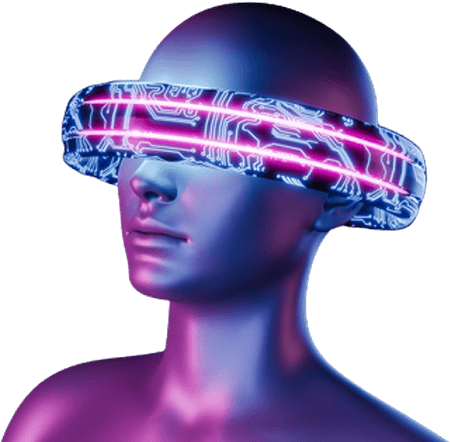What is the difference Between Claude 3 Sonnet and Claude 3 Opus?
What is the difference Between Claude 3 Sonnet and Claude 3 Opus? Among their offerings, two models stand out: Claude 3 Sonnet and Claude 3 Opus. These advanced AI systems have captured the attention of researchers, developers, and enthusiasts alike, each boasting its own unique capabilities and strengths. In this comprehensive article, we’ll delve into the intricacies of these models, exploring their differences, underlying architectures, and potential applications, to help you better understand which one might be the ideal choice for your specific needs.
Understanding Language Models and Their Importance
Before we dive into the specifics of Claude 3 Sonnet and Claude 3 Opus, it’s essential to understand the significance of language models and their role in the field of artificial intelligence.
The Rise of Language Models
Language models are a type of AI system that specializes in understanding, generating, and manipulating human-readable text. These models are trained on vast amounts of textual data, allowing them to learn the patterns, structures, and semantics of natural language. By analyzing and internalizing these linguistic intricacies, language models can perform a wide range of tasks, from text generation and summarization to question answering and language translation.
The advent of powerful language models has revolutionized various industries, including customer service, content creation, research, and education. These models have the potential to automate and streamline processes, augment human capabilities, and unlock new avenues for creativity and innovation.
The Importance of Language Models in AI
Language models play a crucial role in the broader field of artificial intelligence. As AI systems become more sophisticated and ubiquitous, the ability to communicate effectively with humans and understand natural language is paramount. Language models serve as a bridge between human and machine intelligence, enabling seamless interactions and facilitating the exchange of information and ideas.
Moreover, language models have implications that extend beyond language itself. By understanding and generating human-readable text, these models can contribute to advancements in areas such as knowledge representation, reasoning, and decision-making, which are fundamental to the development of more general artificial intelligence.
Introducing Claude 3 Sonnet and Claude 3 Opus
Anthropic’s Claude 3 Sonnet and Claude 3 Opus are two distinct language models that have garnered significant attention within the AI community. While both models share certain similarities, they differ in their underlying architectures, training processes, and intended use cases.
Claude 3 Sonnet: A Focused and Efficient Language Model
Claude 3 Sonnet is a language model designed with efficiency and specialization in mind. This model is tailored to excel in specific tasks or domains, leveraging its focused training and optimized architecture to deliver outstanding performance within its area of expertise.
One of the key strengths of Claude 3 Sonnet is its computational efficiency. By employing techniques such as model pruning and quantization, Anthropic has managed to create a language model that can run on a wide range of hardware configurations, including resource-constrained devices like smartphones and embedded systems.
This efficiency makes Claude 3 Sonnet an attractive choice for applications that require real-time language processing or have limited computational resources available. Examples of potential use cases include virtual assistants, chatbots, and language processing tasks in edge computing environments.
Claude 3 Opus: A Versatile and Powerful Language Model
In contrast to the focused nature of Claude 3 Sonnet, Claude 3 Opus is a more versatile and powerful language model designed to tackle a broader range of tasks and domains. This model leverages a larger and more diverse training dataset, as well as advanced architectural techniques, to deliver exceptional performance across a wide range of language-related tasks.
One of the standout features of Claude 3 Opus is its ability to handle complex and nuanced language tasks with a high degree of accuracy and contextual understanding. This makes it well-suited for applications such as natural language processing, text generation, language translation, and question answering systems.
While Claude 3 Opus may require more computational resources compared to its Sonnet counterpart, its versatility and capability make it an attractive choice for organizations and researchers working on cutting-edge language processing tasks or seeking to push the boundaries of what is possible with AI.
Architectural Differences and Training Approaches
To better understand the differences between Claude 3 Sonnet and Claude 3 Opus, it’s essential to explore their underlying architectures and training approaches.
Claude 3 Sonnet: Efficient Architecture and Task-Specific Training
At the core of Claude 3 Sonnet lies a carefully optimized neural network architecture designed for efficiency and specialization. Anthropic’s engineers have employed techniques such as model pruning and quantization to reduce the computational footprint of the model, while maintaining its performance within its target domain.
The training process for Claude 3 Sonnet involves a task-specific approach, where the model is exposed to a curated dataset tailored to the specific task or domain it is intended to address. This focused training allows the model to develop a deep understanding of the linguistic patterns and nuances relevant to its area of expertise, resulting in highly accurate and efficient performance.
Claude 3 Opus: Large-Scale Architecture and Broad Training
In contrast, Claude 3 Opus is built upon a larger and more complex neural network architecture, capable of handling a wider range of language-related tasks. This model leverages advanced techniques such as transformer architectures, attention mechanisms, and transfer learning to achieve its remarkable versatility and performance.
The training process for Claude 3 Opus involves exposing the model to a vast and diverse dataset, encompassing a wide range of domains, topics, and language styles. This broad training approach allows the model to develop a comprehensive understanding of language, enabling it to adapt and perform well across various tasks and contexts.
Moreover, Anthropic employs techniques such as few-shot learning and prompt engineering to further enhance the model’s capabilities. These techniques allow Claude 3 Opus to quickly adapt to new tasks and domains with minimal additional training, making it a powerful tool for researchers and developers exploring the frontiers of language processing.
Performance and Benchmarking
To fully appreciate the differences between Claude 3 Sonnet and Claude 3 Opus, it’s essential to examine their performance on various benchmarks and real-world tasks.
Claude 3 Sonnet: Efficient and Focused Performance
Claude 3 Sonnet excels in its targeted domain or task, delivering exceptional performance while maintaining a high degree of computational efficiency. Benchmarks have shown that this model can achieve state-of-the-art or near state-of-the-art results within its area of focus, while requiring significantly less computational resources compared to larger, more generalized models.
For example, if Claude 3 Sonnet were trained for a specific task, such as sentiment analysis in customer reviews, it would likely outperform more generalized models in terms of accuracy and efficiency on that specific task. However, its performance may not be as impressive when applied to tasks outside its area of expertise.
Claude 3 Opus: Versatile and Powerful Performance
On the other hand, Claude 3 Opus has demonstrated remarkable performance across a wide range of language-related tasks and benchmarks. This model has consistently ranked among the top-performing language models in various natural language processing (NLP) challenges, showcasing its ability to handle complex language tasks with a high degree of accuracy and contextual understanding.
Benchmarks such as the General Language Understanding Evaluation (GLUE) and the Stanford Question Answering Dataset (SQuAD) have highlighted the versatility and power of Claude 3 Opus. Its ability to adapt to new tasks and domains through techniques like few-shot learning and prompt engineering further enhances its value and potential applications.
However, it’s important to note that the exceptional performance of Claude 3 Opus comes at the cost of increased computational requirements and resource demands. While Anthropic has implemented various optimization techniques, this model still requires significant computational resources to operate at its full potential.
Applications and Use Cases
The differences between Claude 3 Sonnet and Claude 3 Opus make each model well-suited for different applications and use cases, catering to the diverse needs of organizations, researchers, and developers.
Claude 3 Sonnet: Ideal for Embedded Systems and Real-Time Applications
Claude 3 Sonnet’s computational efficiency and focused performance make it an ideal choice for applications that require real-time language processing or have limited computational resources available. Some potential use cases for this model include:
- Virtual Assistants and Chatbots: Claude 3 Sonnet can power virtual assistants and chatbots that need to understand and respond to user queries in real-time, while operating on resource-constrained devices like smartphones or embedded systems.
- Edge Computing and IoT Devices: The model’s efficiency makes it suitable for language processing tasks in edge computing.
FAQs
1. What are Claude 3 Sonnet and Claude 3 Opus?
Answer: Claude 3 Sonnet and Claude 3 Opus are two versions of the Claude 3 AI language model developed by Anthropic. These versions are designed to cater to different user needs and applications, offering varying levels of capabilities and features.
2. What are the key differences between Claude 3 Sonnet and Claude 3 Opus?
Answer: The key differences lie in their performance and intended use cases. Claude 3 Sonnet is optimized for general-purpose tasks and provides a balance between speed and accuracy. In contrast, Claude 3 Opus is designed for more advanced and specialized tasks, offering enhanced accuracy, deeper understanding, and better handling of complex queries.
3. Which version should I choose for basic conversational AI tasks?
Answer: For basic conversational AI tasks, Claude 3 Sonnet is typically sufficient. It provides reliable performance for everyday interactions, customer service, and simple information retrieval, making it a suitable choice for general use.
4. Can Claude 3 Opus handle more complex tasks compared to Claude 3 Sonnet?
Yes, Claude 3 Opus is better equipped to handle complex tasks due to its advanced processing capabilities. It excels in areas requiring deeper comprehension, nuanced understanding, and precise responses, making it ideal for specialized applications in research, technical writing, and complex problem-solving.
5. Are there differences in cost between Claude 3 Sonnet and Claude 3 Opus?
Answer: Generally, yes. Claude 3 Opus, with its advanced features and capabilities, is often priced higher than Claude 3 Sonnet. The pricing reflects the additional resources and development required to support the enhanced performance of Claude 3 Opus. Users should consider their specific needs and budget when choosing between the two versions.


